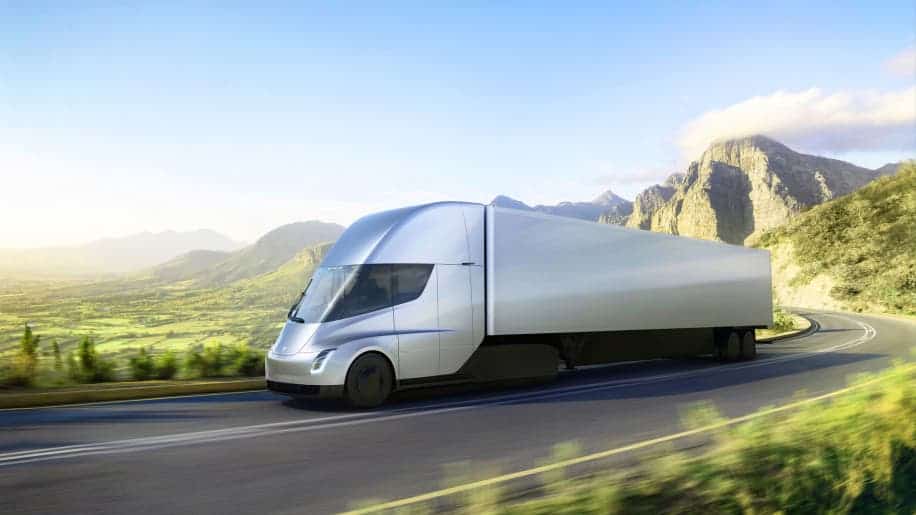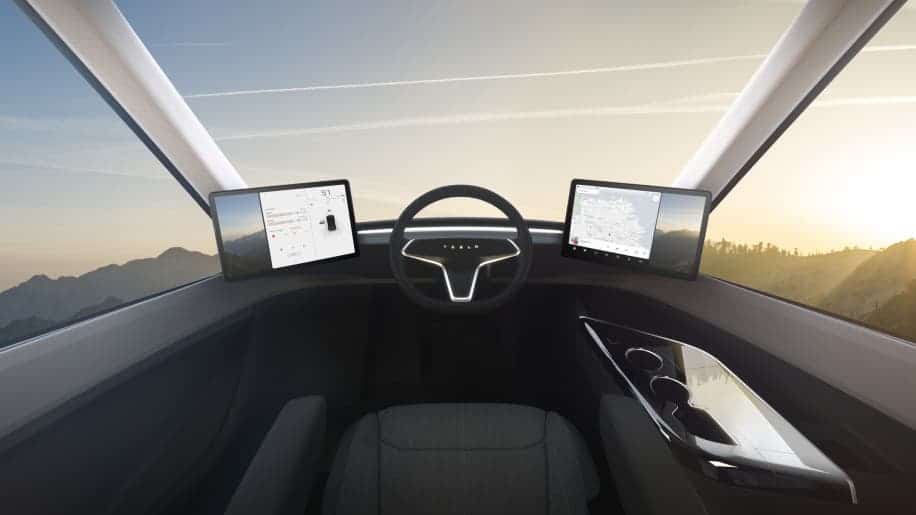Elon Musk has hinted at the new Tesla truck for ages, and now it’s finally arrived. Like everything that Musk showcases, it’s sleek, innovative, and extremely promising. But also like everything Musk presents, it also leaves a lot of questions.

Developing an electric truck offers massive benefits, but also raises huge challenges. You get the chance to revolutionize one of the world’s most polluting industries (trucking), but the odds are stacked against you. For starters, you need enough power to move the mammoth car around, along with the big load trucks usually carry and a heavy battery. You also need to ensure a huge range, as trucks usually travel long distances and overcome the lack of aerodynamics.
Not everything is bad, however. Electric engines actually offer some advantages over conventional diesel engines. Namely, they generate a tremendous amount of torque, which is ideal for heavy-duty trucks. Many heavy-duty trucks also have 10 gear transmissions, to get the truck rolling fast enough for highways — but this also introduces a lot of wear and tear.
Tesla’s new truck, simply called the Semi, has one gear and no transmission. This drastically reduces wear and tear, saving money and time spent on transmission repairs. Furthermore, once the truck starts rolling, it can also use its huge mass to generate extra power to expand its range.
Still, the elephant in the room when it comes to electric trucks is the battery. Simply put, battery technology just hasn’t been at a point where it can power a truck. But Tesla Motors believe they have the case cracked. In front of a jam-packed audience, Musk presented the Semi to roaring applause. He says the trucks could go for up to 500 miles at maximum weight at motorway speeds, in spite of the heavy battery. Its diesel counterparts are able to travel up to 1,000 miles on a single tank of fuel so they have twice as much range, but Musk said diesel trucks were 20 percent more expensive to run per mile. Without cargo, the Semi can do 0 to 60mph in five seconds or reach 60mph in 20 seconds while carrying the maximum weight allowed on US highways — more than 36,000kg. Those are some impressive figures.
You can watch the full presentation here:
https://www.youtube.com/watch?v=31xvmvAq8ms
Musk also says the Semi features several other upgrades: it has a centered driver’s seat for a “more commanding view of the street,” replaces real mirrors with screens and cameras, and does a lot to reduce the “clutter” from third-party items and gadgets. But whether or not those are actually improvements remains to be seen. For instance, some have said that having a centered seat makes it more difficult to lean out the window when passing paperwork to the police or border patrol. It might also reduce visibility in some instances, especially for backing up. The lack of physical mirrors is also certain to make many drivers uneasy and can make for some unfortunate situations.

As always, Musk’s products are a mishmash of brilliance, innovation, and hazard. If the Semi can do all he says it can do, it can be revolutionary. But can it, really? The question seems to be annoyingly floating around, and for now at least, there’s no clear-cut answer. However, electric trucks seem to be an inevitable development. It might not be now, next year, or the year after that — but it will happen sooner rather than later, and it will do a big difference. Despite advancements which have made trucks more efficient, the trucking industry contributes 1.6 billion metric tons of CO2 per year globally. If that can save money and make the streets safer, what’s not to like?

No price tag has been presented. Here’s the full technical sheet of the Tesla Semi:
- 0-60 in 5 seconds
- 0-60 with 80,000 max gross weight in 20 seconds
- 65 up 5 percent grade at max gross
- 500-mile range at maximum weight and highway speed
- .36 drag coefficient/.65-.70 diesel truck/.38 Buggati Chiron
- 4 independent motors and independent suspension
- 1 Gear – No transmission
- Center driver position like a race car
- 400-mile range with 30-minute charge (aka MEGA CHARGE)
- Charge at origin or destination
- Auto braking
- Auto lane keeping
- Million mile guarantee
- Regenerative braking (brake pads last forever)
- Tesla app just like the Model S
- $1.26 per mile Tesla Semi vs. $1.51 per mile diesel truck






